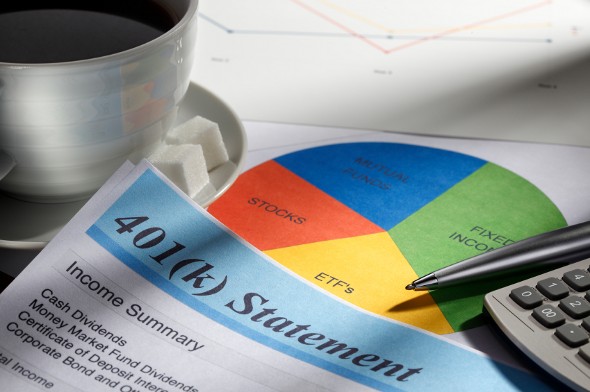Have you found a new job? Are you starting a new career? What are you going to do with the 401(k) retirement plan that you left in the care of your previous employer? Here’s what you should do: rollover your old 401(k) retirement plan into your new employer’s plan right away. Don’t pass go. Don’t have the check sent to you because you might forget to roll over your funds.
Find out now: How does my 401(k) work?
Here are a couple reasons why you should not let your old 401(k) sit idle for long.
401(k) Rollover Rules Could Leave You with a Tax Bill

The people at the Internal Revenue Service (IRS) are sticklers about the 401(k) rollover. You can withdraw the money in your 401(k) plan, but that is almost always a horrible idea. You will forgo future earnings on that money. You will also have to pay taxes and a penalty.
Because a 401(k) plan is tax deferred, you will owe federal and state income tax on the amount of money that you withdraw. This will count as ordinary income and can push you up into the next tax bracket if you are not careful. Also, if you are under 59½ years old, you typically have to pay a 10% penalty for a premature distribution. Between the taxes and the penalty, this can be a significant chunk out of your retirement savings.
You could have your fund manager send you a distribution check directly which will be made out to you. Then, you will have to deposit the funds in your new employer’s 401(k) retirement plan. Or, you can conduct an indirect rollover into an IRA of your choosing. But, both of these 401(k) rollover options are very dangerous. There’s a time limit of 60 days in which you can deposit the funds, or the IRS will consider it a premature distribution (translation: withdrawal) and tax and penalize you accordingly.
Save yourself the headache and have your old 401(k) plan manager directly rollover your old 401(k) into your new employer’s 401(k) plan. There will then be no penalties, no taxes until you withdraw the money in retirement, and no temptation to hold it out longer than 60 days.
If you’re OK with getting taxed you can always rollover your 401(k) funds to a Roth IRA. This is tempting for people who feel that their current tax bracket is lower than it will be in retirement. Plus, Roth accounts don’t come with required minimum distributions. Talk to your brokerage about the best way to manage a rollover from a 401(k) to a Roth IRA to make sure you’re meeting your tax obligations.
Check our our investment calculator.
Direct Rollover Keeps You Investing for Retirement

Rolling over your 401(k) directly from your previous employer to your new one keeps you investing. There is something to to be said for inertia. It is powerful. Because once you stop investing, it can be a nightmare for many to find the motivation to start back up again. You’re already doing it – just continue.
Another thing to keep in mind is that you cannot invest in your previous employer’s 401(k) plan when you do not work there anymore. This is incentive to find a new plan or a traditional IRA to roll your 401(k) over to right away. You are losing the power of compounding interest and missing investing opportunities if you are just sitting on the sidelines.
401(k) plans provide a relatively cheap and an easy way to invest for retirement. Historically, most 401(k) plans and especially those who mirror the markets with index funds have low expenses. You should continue to take advantage of these great retirement investment vehicles even when you switch jobs. You should look to rollover your old 401(k) plan to your new employer’s plan as soon as possible. And, be extremely careful taking any direct distributions from your plan even if you have the best intentions at heart. Go with a trustee-to-trustee transfer (aka a direct rollover in which you never get a check) and you will avoid taxes as you move your 401(k).
Tips for Getting Retirement Ready
- Figure out how much you’ll need to save to retire comfortably. An easy way to get ahead on saving for retirement is by taking advantage of employer 401(k) matching.
- Work with a financial advisor. According to industry experts, people who work with a financial advisor are twice as likely to be on track to meet their retirement goals. A matching tool like SmartAsset’s SmartAdvisor can help you find a person to work with to meet your needs. First you’ll answer a series of questions about your situation and goals. Then the program will narrow down your options from thousands of advisors to up to three registered investment advisors who suit your needs. You can then read their profiles to learn more about them, interview them on the phone or in person and choose who to work with in the future. This allows you to find a good fit while the program does much of the hard work for you.
Photo Credit: © iStock/Quasarphoto, © iStock/DNY59, © iStock/Neustockimages
